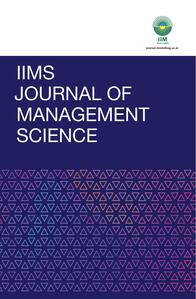
1 Centre of Excellence in Public Policy and Government, Indian Institute of Management Kashipur, Uttarakhand, India
2 School of Media Studies, Presidency University, Bangalore, Karnataka, India
3 Department of Social Work, University of Delhi, New Delhi, India
4 Institute of Mass Communication, Film and Television Studies, Kolkata, West Bengal, India
Creative Commons Non Commercial CC BY-NC: This article is distributed under the terms of the Creative Commons Attribution-NonCommercial 4.0 License (http://www.creativecommons.org/licenses/by-nc/4.0/) which permits non-Commercial use, reproduction and distribution of the work without further permission provided the original work is attributed.
The imminent climate disaster demands prompt consideration and implementation of measures in susceptible areas like Kullu, Himachal Pradesh. Utilizing secondary data, this study conducts a rigorous examination of the climate risk assessment, management, and governance dynamics within the region. It aims to elucidate the complex interaction between historical climate patterns, existing vulnerabilities, and potential approaches for mitigating risks and enhancing governance. This study examines the evolving climate patterns in Kullu’s region, highlighting the urgent requirement for effective water management practices and resilient agricultural strategies. The research provides advance notice of the forthcoming hydrological risks, emphasizing the need for a combination of scientific advancements and community involvement in developing effective governance approaches. Additionally, the researcher emphasizes the significance of improving early warning systems, promoting community-centered initiatives, and reassessing policy frameworks to cultivate a future characterized by resilience and sustainable adaptation in the region of Kullu. This study proposes that by incorporating empirical information and local knowledge, an integrative trajectory may be established to provide a sustainable road for Kullu. This pathway would enable Kullu to withstand climate adversities and promote a happy cohabitation with nature. The abstract serves as an invitation for readers to further explore the research conducted in Kullu, Himachal Pradesh. The research provides a comprehensive collection of valuable insights, strategies, and potential future directions for climate risk management in the area. It emphasizes the importance of adopting a collaborative, well-informed, and proactive approach to climate governance in the region.
Clinical governance/decision making, environmental monitoring and analysis, government and governance, risk assessment
Allen, S., Ballesteros-Canovas, J., & Bahinipati, C. (2020). Climate risk assessment: A pilot study in Kullu, Himachal Pradesh [Technical report]. https://www.researchgate.net/publication/357656871_CLIMATE_RISK_ASSESSMENT_A_Pilot_study_in_Kullu_ Himachal_Pradesh
Berkes, F., Folke, C., & Colding, J. (2000). Linking social and ecological systems: Management practices and social mechanisms for building resilience. Cambridge University Press.
Bhardwaj, P., Upadhyay, S., & Jindal, T. (2011). Climate change and its impacts on the ecosystems of Himachal Pradesh: Case study on the cold desert ecosystem of Lahaul-Spiti and Kullu District. Journal of Biodiversity and Ecological Sciences, 1(4), 293–312.
Habermas, J. (1984). The theory of communicative action. Beacon Press.
Huggel, C., Allen, S., Wymann Von Dach, S., Dimri, A. P., Mal, S., Linbauer, A., Salzmann, N., & Bolch, T. (2020). An integrative and joint approach to climate impacts, hydrological risks and adaptation in the Indian Himalayan Region. In Himalayan weather and climate and their impact on the environment (pp. 553–573). Springer.
IHCAP. (2016). Climate vulnerability, hazards and risk: An integrated pilot study in Kullu District, Himachal Pradesh [Synthesis Report]. Http://Admin.Indiaenvironmentportal.Org.In/Reports-Documents/Climate-Vulnerability-Hazards-And-Risk-Integrated-Pilot-Study-Kullu-District#:~:Text=The%20report%20introduces%20an%20integrated,Ihr
IPCC. (2014). Climate Change 2014: Synthesis report. Contribution of working groups I, II, and III to the fifth assessment report of the intergovernmental panel on climate change. IPCC. https://www.ipcc.ch/report/ar5/syr/
Kumar, L., Sharma, V. R., & Sanu, S. K. (2022). Examining Kullu District’s past disastrous incidents and its impact on livelihood: With special reference to earthquake. Education and Society, 46(4), 36–42.
Moser, S. C. (2010). Communicating climate change: History, challenges, process and future directions. Wiley Interdisciplinary Reviews: Climate Change, 1(1), 31–53.
Reid, H., Alam, M., Berger, R., Cannon, T., Huq, S., & Milligan, A. (2009). Community-based adaptation to climate change: An overview. In H. Ried (Ed.), Community-based adaptation to climate change (pp. 11–33). IIED.
Renn, O. (2008). Risk governance: Coping with uncertainty in a complex world. Earthscan.
Sharma, E., & Tomar, S. (2017). Climate change impacts and adaptation in the Indian Himalayas: A critical review. Climate Development, 9(1), 99–113.
Singh, R. B., & Singh, S. (2017). Climate change and its impact on the ecosystems of the Himalayan Region. In Climate change and biodiversity (pp. 45–64). Springer.
State Government of Himachal Pradesh. (2012). Himachal Pradesh state climate change strategy and action plan. Environment, Science, and Technology Department.